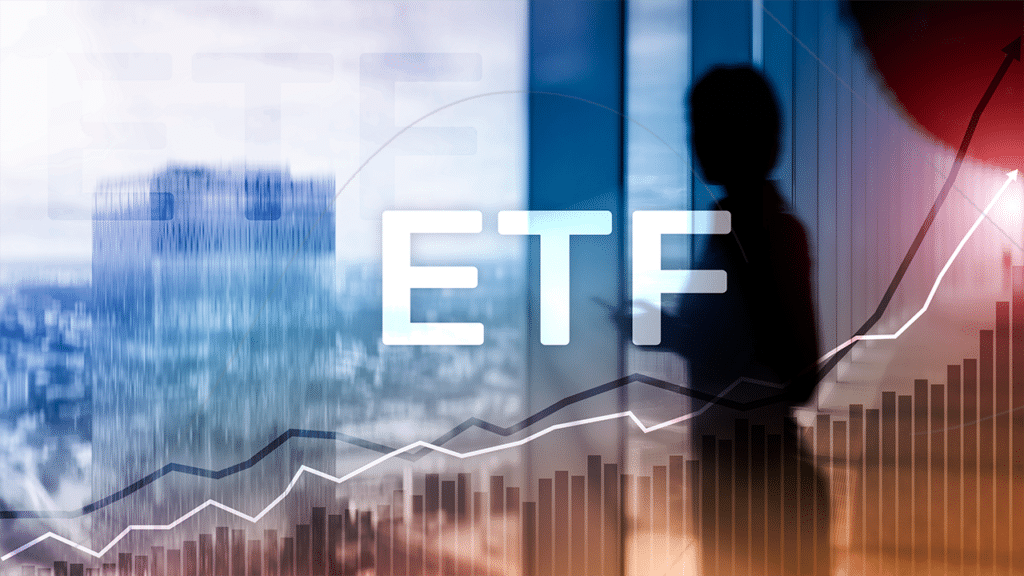Exchange-Traded Funds (ETFs) have risen to prominence as a favored and flexible investment option, transforming the approach of both individuals and institutions towards diversification and portfolio management. In this extensive handbook, we will thoroughly examine ETFs, investigating their framework, advantages, and key factors for investors aiming to maximize their benefits.
What are ETFs?
Exchange-Traded Funds, commonly known as ETFs, are investment funds that trade on stock exchanges, similar to individual stocks. ETFs pool money from investors and invest in a diversified portfolio of assets, such as stocks, bonds, or commodities. This unique structure provides investors with the opportunity to gain exposure to a wide range of assets, offering instant diversification within a single investment.
Key Advantages of ETFs

Main Advantages of ETFs:
Diversification
ETFs offer investors an efficient method to diversify their portfolios across different asset classes and sectors. By holding a basket of assets, investors can mitigate risks associated with individual stocks or bonds, fostering a more stable and robust investment strategy.
Liquidity
ETFs, being traded on stock exchanges, provide liquidity akin to individual stocks. Investors can buy and sell ETF shares throughout the trading day at market prices, offering flexibility and convenient access to their investments.
Cost Efficiency
ETFs typically feature lower expense ratios compared to traditional mutual funds. Their passive management style, often linked with index-tracking ETFs, leads to reduced management fees, making them an appealing choice for cost-conscious investors.
Transparency
ETFs disclose their holdings daily, enabling investors to see precisely which assets they own. This transparency empowers investors to make well-informed decisions based on the current composition of the fund’s portfolio.
Flexibility
ETFs provide flexibility in trading options, including limit orders, stop-loss orders, and options trading. This versatility enables investors to employ various trading strategies and customize their investment approach to meet specific objectives.
Types of ETFs
Index ETFs
These funds aim to replicate the performance of a specific market index, such as the S&P 500. Index ETFs offer broad market exposure and are often used by investors seeking a passive, low-cost investment strategy.
Sector ETFs
Focused on specific industries or sectors, these ETFs allow investors to target areas of the market they believe will outperform. Examples include technology, healthcare, or energy sector ETFs.
Bond ETFs
Investing in a diversified portfolio of bonds, these ETFs provide income through interest payments. They offer an alternative for investors looking to add fixed-income exposure to their portfolios.
Commodity ETFs
These funds track the performance of commodities such as gold, silver, or oil. Commodity ETFs provide a convenient way for investors to gain exposure to physical commodities without directly holding them.
Considerations for Investors

Risk Management
While ETFs provide diversification benefits, it’s crucial for investors to understand the underlying risks associated with the specific assets held in the fund. Conduct thorough research and assess the risk-return profile of the ETF before investing.
Trading Costs
While ETFs generally have lower expense ratios, investors should be mindful of trading costs, including commissions and bid-ask spreads. These costs can impact overall returns, especially for frequent traders.
Tax Efficiency
ETFs are known for their tax efficiency due to the “in-kind” creation and redemption process, which minimizes capital gains distributions. Investors should consider the tax implications of their investments, especially in taxable accounts.
Due Diligence
Before investing in any ETF, conduct thorough due diligence. Examine the fund’s historical performance, track record, and the methodology used to construct the underlying index. Additionally, consider the fund manager’s expertise and the overall stability of the fund provider.
Conclusion
ETFs have undoubtedly transformed the investment landscape, offering investors a powerful tool for building diversified and cost-effective portfolios. Whether you are a seasoned investor or a newcomer to the financial markets, understanding the nuances of Exchange-Traded Funds is essential for making informed investment decisions. By carefully considering the advantages, types, and key considerations outlined in this guide, investors can unlock the full potential of ETFs and navigate the complexities of the ever-evolving financial landscape.

 Technical Features and Financial Management of the Inter Passport Card <p style=' font-weight: normal;font-size: 16px !important; text-align: left;'> Discover the main features of the Inter Passport Card and how it can facilitate the effective management of your personal finances. </p>
Technical Features and Financial Management of the Inter Passport Card <p style=' font-weight: normal;font-size: 16px !important; text-align: left;'> Discover the main features of the Inter Passport Card and how it can facilitate the effective management of your personal finances. </p>  Inter Passport Card: The Ideal Solution for Managing Your Credit Securely <p style=' font-weight: normal;font-size: 16px !important; text-align: left;'> Discover how the no-annual-fee card from Banco Inter can help you control your finances and offer benefits on purchases. </p>
Inter Passport Card: The Ideal Solution for Managing Your Credit Securely <p style=' font-weight: normal;font-size: 16px !important; text-align: left;'> Discover how the no-annual-fee card from Banco Inter can help you control your finances and offer benefits on purchases. </p>